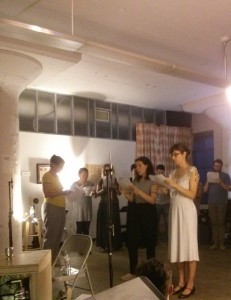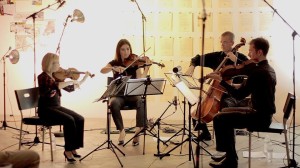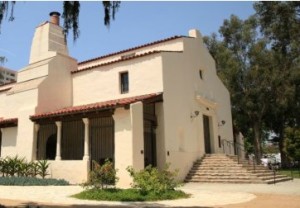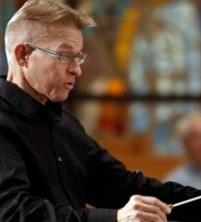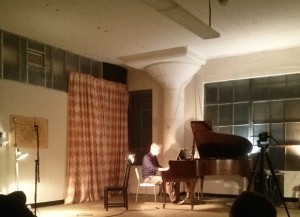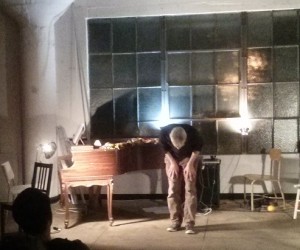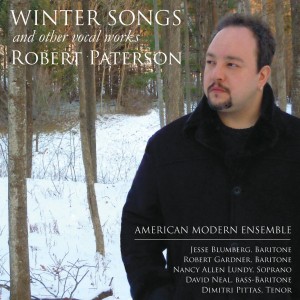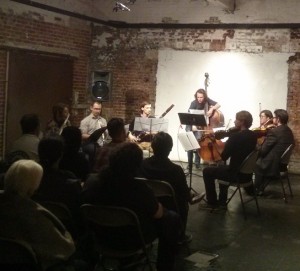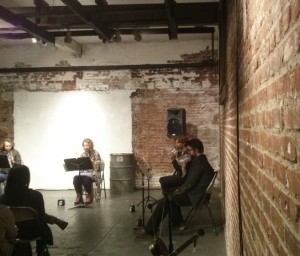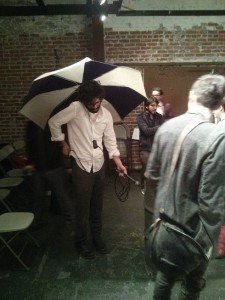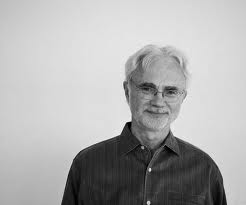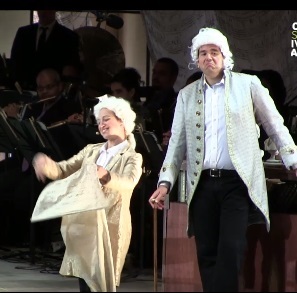 The 2014 Ojai Music Festival opened on Thursday June 12 to begin 4 days packed with informative talks, movie screenings, parties and concerts. The Festival’s Music Director this year is Jeremy Denk and the resident musical groups included The Knights orchestral collective and the Brooklyn Rider string quartet. Friday night’s concert was built around an examination of the Classical period and featured a Haydn string quartet as well as the world premiere of a new opera – “The Classical Style” – by Jeremy Denk and Steven Stucky that was commissioned by the festival for the occasion.
The 2014 Ojai Music Festival opened on Thursday June 12 to begin 4 days packed with informative talks, movie screenings, parties and concerts. The Festival’s Music Director this year is Jeremy Denk and the resident musical groups included The Knights orchestral collective and the Brooklyn Rider string quartet. Friday night’s concert was built around an examination of the Classical period and featured a Haydn string quartet as well as the world premiere of a new opera – “The Classical Style” – by Jeremy Denk and Steven Stucky that was commissioned by the festival for the occasion.
The concert began with Haydn’s String Quartet in G minor, Op. 74, No.3 (1793), performed by Brooklyn Rider. Right from the opening passages of the 1st movement the light, bouncy rhythms combine with the classical harmonies and familiar Haydn wit to produce a lively and optimistic feel. As the instruments took turns developing the theme there was a sense of increasing fussiness that added to the fun. The playing was light and precise, setting just the right mood for the evening.
The second movement was more stately and slower – almost hymn-like – but easy and flowing. This turned a bit darker towards the middle, but soon returned to the lighter feel of the opening, giving a sense of resolution. The ensemble playing was impressive here and the ornamentation in the upper parts nicely done.
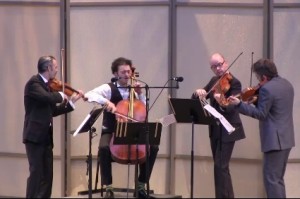 The third movement, in the traditional triple meter, was faster and featured close harmony. The balance and dynamic control were outstanding and the bright feel reinforced the sense that this was music that does not take itself too seriously. The final movement was faster still and had a dramatic feel that turned brighter with a series of bouncing rhythms that suggested a sort of gallop, hence the nickname of this Haydn string quartet as the “Rider”. This work is typical Haydn – bright, optimistic and not too serious. The precise and agile playing by Brooklyn Rider caught the essence of this piece exactly and it was an ideal prelude to the opera that followed.
The third movement, in the traditional triple meter, was faster and featured close harmony. The balance and dynamic control were outstanding and the bright feel reinforced the sense that this was music that does not take itself too seriously. The final movement was faster still and had a dramatic feel that turned brighter with a series of bouncing rhythms that suggested a sort of gallop, hence the nickname of this Haydn string quartet as the “Rider”. This work is typical Haydn – bright, optimistic and not too serious. The precise and agile playing by Brooklyn Rider caught the essence of this piece exactly and it was an ideal prelude to the opera that followed.
Not being able to make it to Ojai, I listened to the concert as it was streamed on the Internet. The quality, both audio and visual, was excellent and there were no drop-outs or interruptions of consequence. The seeing and hearing are much like being in one of the back rows of the Libbey Bowl and was actually an improvement over my usual seating out on the lawn.
The streaming provided another benefit – a televised interview of Steven Stucky during intermission by Fred Child of American Public Media. The subject of the interview was the music for The Classical Style: An Opera (of Sorts). This is a comedy based loosely on The Classical Style by the late Charles Rosen, a textbook first published in the early 1970s and widely influential in the field of musicology. The libretto, by Jeremy Denk, was taken in part from the Rosen book but the opera also includes the personalities of Mozart, Beethoven, Haydn, Robert Schuman, Charles Rosen, and characters like the Tonic Chord, Dominant Chord, Sub Dominant Chord and the Tristan Chord as well as a host of supporting characters. The plot revolves around Haydn, Mozart and Beethoven returning to earth to reclaim their musical relevance and to rescue the classical style from academic over-analysis by appealing to musicologist Rosen. There are also scenes involving the several musical chords in a bar, and other assorted comic vignettes and sketches derived from musical theory and history.
Apart from the varied collection of characters, one of the challenges Mr. Stucky pointed out was the need to write music in the classical style, using the sonata form where appropriate, or in the romantic style during the Tristan Chord scenes. Another challenge was that much of the comedy was based on knowing something about music theory, and this needed to be put across in a way that all audiences could enjoy. The character of Charles Rosen, a close personal friend of Jeremy Denk, was portrayed as something of a hero, bringing order to the comedic chaos around him, and this necessitated a more serious musical sensibility when he was on stage. Steven Stucky, while confident and articulate, nevertheless betrayed the look of a man who had spent the last two years of his life on a large-scale work to be premiered on Friday the 13th. He needn’t have worried.
